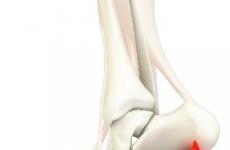Class hour rules of conduct at school in case of fire. How to deal with a school fire
It must be remembered that in classrooms educational institutions the fire spreads at a speed of 1-1.5 meters per minute, in corridors - 4-5 m / min. When furniture and paper burns in classrooms, carbon monoxide accumulates in the air, which, if inhaled within 5-10 minutes, becomes fatal. That is why when emergency fire in a school, you need to act quickly, decisively and competently, in accordance with previously developed evacuation plans and practical exercises in case of fire.
The main tasks of personnel in case of fire:
At the first sign of fire, the smell of smoke, or the fire warning system is triggered, immediately call the firefighters by calling 01 (on mobile - 911 or 112).
Notify the head or the person responsible for fire safety of the institution about the fire.
Immediately, before the arrival of firefighters, organize the evacuation of students from the school building.
Open all emergency exits out of the building.
Ensure compliance with safety requirements by workers who, if possible, take part in extinguishing the fire with the available means.
Arrange a meeting for arriving fire brigades.
After the evacuation of the children, if possible, check all the premises in order to exclude the presence of students in the danger zone: from fright, they often hide in secluded places.
The order of the teacher in case of fire:
Don't panic yourself and calm the kids down.
First of all, to evacuate children from those premises where it is dangerous to life, as well as from the upper floors, and the first to take out the students of the elementary grades.
Clarify the situation: is there smoke in the corridor, is it possible to withdraw and evacuate students.
If it is safe to leave the classroom, build the pupils. Leave briefcases, clothes in place. If available, wear gauze bandages to protect the respiratory system. Get a cool magazine.
Take students out of the school building along the safest and shortest path. At the same time, the teacher must go ahead, and at the end of the chain of children put the tallest and most physically developed boys, so that, if necessary, they can help the weaker ones.
At the end of the evacuation, in a predetermined safe gathering place, take a roll call of all children on the lists. The teacher must always be close to the students taken out of the buildings.
If the corridor is smoky and the exit from the classroom is unsafe, you need to close the front door, seal it with an available cloth, put the children on the floor and slightly open the window for ventilation. If there are metal bars on the windows, they must be opened immediately. As soon as you hear the noise of the approaching fire trucks, give a signal so that the soldiers immediately begin to evacuate the children through the windows. The teacher is then the last to leave the classroom.
School is one of the places mass stay of people. When a fire breaks out, panic and crush often occur, in which children can die. To prevent this from happening, spend training drills that will help you become attentive, focus only on the necessary. And at the same time, they will allow you to distribute roles and responsibilities during the evacuation.
How it all begins
Fire alarm at school, as in all public institutions, is carried out using fire alarm... In addition to this, a voice message can be sent about the fire.
![]()
If any of the technical personnel or teachers discovers a fire source, then you can try to eliminate it yourself with primary fire extinguishing means, which are located in fire cabinets, on fire shields or fire stands. Any tool that is at hand is also suitable for extinguishing a fire.
Fire extinguishers must be installed in all classrooms of the school. In addition, in cabinets with flammable liquids and live wires, boxes with sand are installed for extinguishing.
If a fire occurs, the director or his deputy should call fire department and report this situation. After that, there is a quick preparation of schoolchildren for the evacuation from the building.
If funds are available in the account individual protection respiratory organs, students are given these funds. In the absence of these funds, you can use handkerchiefs, part of school clothes, and in general any fabric that can be found at this moment. The material is moistened with water, after which the students cover their mouth and nose.
The teacher briefly explains that after the signal fire siren you cannot panic and run alone through the school building, because he can get lost in smoke conditions. At this moment, those responsible for fire safety emergency and central exits are opened and a phased evacuation of schoolchildren begins.
Teacher actions
In the event of a fire in the school, the teacher needs to prevent students from panic as effectively as possible. A calm and confident behavior will help children concentrate on the situation and carefully approach the evacuation phase.
The teacher needs to find out through which room it will be necessary to evacuate, how safe is this or that way of exiting the building. Distribute personal protective equipment soaked in water. Also, clarify that you cannot run into the fire zone and try to extinguish the fire. This will be done by more trained people.
After that, warn students that their personal belongings should be left in the building for speed of movement. Of the things, the teacher will take only the school magazine. After leaving the building, schoolchildren should not scatter, since the teacher needs to make sure that all children entrusted to him are out of the danger zone, and report the results of the responsible event to the director. A school journal will help you to compile lists of children.
If a school with a large number of students and the fire source is not on your floor, you will have to wait in line to evacuate to avoid crowds.
Exit of students and staff
To reduce the load on the corridors, the order of evacuation of schoolchildren must be observed. The first to be displayed are schoolchildren who find themselves in rooms close to fires. Then the evacuation of children from the upper floors begins, starting with the elementary grades.
On a safer route, schoolchildren are brought out in pairs. The movement of the whole group is directed by the teacher, and the most physically developed boys, who are able to help weaker comrades, close the group. They also close the doors behind them in order to weaken the intensity of the spread of fire.
Small children who are not able to move independently are carried in their arms... In case of strong smoke, the group moves to the exit one by one and crawling, since the likelihood of damage to the respiratory system becomes lower. The school principal and those in charge should be the last to be evacuated from the burning building.
Stay in a burning building
There are emergencies when it is impossible to carry out a complete evacuation of students and teachers. If a safe exit was not found, then the door to the classroom is tightly closed and sealed with a cloth soaked in water.
The windows are slightly opened, and the children are seated on the floor, closer to the windows. Metal bars are removed from the windows.
It is necessary to immediately inform everyone about the whereabouts of the children. responsible persons... Without urgent need keep children away from downpipes, rope or tied sheets, especially from higher floors.
Firefighters who have arrived must organize the rescue of such children first.

Collection and injury cases
Evacuation of students is carried out outside the school grounds to a safe place. This is usually a sports field or stadium. At this point, the students do not disperse, but line up in columns, and the teacher conducts a roll call. Each teacher informs the principal about the number of students present at the lesson and the number of those who left the building. In the absence of any of the children, the director reports this fact to the arriving fire brigade, and a search for the missing person is organized.
The evacuation of children cannot always be carried out without injuries. Before the arrival of the medical service at the scene, you can independently arrange first aid for injured children. Schoolchildren with burns should be referred to hospital immediately. In no case should burns be treated with any kind of vegetable oil. Children with fractures, dislocations and sprains are sent to the emergency room. The injured limbs must be immobilized, for which bandages and splints are applied.
Extinguishing
The main fire extinguishing is carried out by the arrived calculations. After the elimination of the fires, the director organizes the ventilation of all premises of the school.
If you follow these simple rules, then the evacuation process can take from three to five minutes. And it will be great if the signal in your school turned out to be just a training alarm, and you were able to repeat the actions once again in case of fire.
School rules of conduct in case of fire.What do you need to know about evacuation in advance?
The rules of conduct for schoolchildren in a school fire prescribe knowledge of escape routes. All teachers and students must be prepared for extreme situations. An evacuation plan must be developed by the school administration in advance. Before the fire, all actions in the event of a fire are practiced with children in an educational version.
First actions in case of fire.
The rules of conduct during a fire in a school include the first steps to be taken in case of fire. As soon as a fire breaks out, you need to turn off the electricity and gas with a switch. If electrical appliances catch fire, disconnect them from the mains and cover with a wet blanket. Then you need to tightly close the doors and windows to block the access of oxygen. At low fire - try to extinguish the flame with a fire extinguisher. It is important to get young children and the elderly out of the room.When evacuating from the site of a fire, only the most important things (documents, money, valuables) are taken with them. The elevator cannot be used. For the descent, you need to use the stairs. It is important to protect your breath from smoke. With its large content in the room - to get to the exit by crawling. Front door should not be locked with a key.
Rules of conduct for children in a school fire - how and where to report?
As soon as a schoolchild discovered a fire, it is necessary to immediately inform adults (teachers or security guards) about it or call the firefighters. To do this, 101 is dialed on landline phones, and 112 from mobile phones. Before calling, you need to calm down. The dispatcher is informed about the following information: the address where the fire occurred and the number of the school; how strong the fire is, that is, the degree of danger to health and life of people; in which room the fire is raging; what exactly is burning and how much; any information about the fire (damaged wiring, flashing lights, etc.); Full name and phone number. After the call, the phone cannot be disconnected, since the dispatcher can call back to ask clarifying questions. If the conversation is over, it is reported that the special services have already left. If possible, it is better to wait for the firefighters and show the place of fire and show them the shortcut.
rules safe behavior in the event of a school fire: first steps.
You can't panic. Pupils line up at the instructor's command in a column of two and leave the building along previously worked out paths or through emergency exits. But always under the guidance of teachers. Homeroom teachers should bring a study journal with them. The most prepared boys, physically strong, are placed in the closing columns. The column of schoolchildren should move quickly, but not at a run.
Evacuation Reporting School fire code prescribes clear evacuation procedures. This is getting people out of the building. Do not shout "fire!" As this can lead to panic. As a result - human casualties, although there has not yet been a direct threat to their lives. There are several ways to alert about a fire: voice alert; triggering an alarm by a manual call; pressing panic button; using a loudspeaker broadcasting throughout the building (in this case, the text must be prepared in advance).
Evacuation in case of fire.
The main escape routes are fire exits. In case of smoke, children are transferred to the opposite part of the building, followed by the withdrawal of schoolchildren. High school students are allowed to assist teachers in evacuation primary grades(help to dress, calm down, etc.). The school rules of conduct in the event of a fire state that the gathering of children is carried out in a certain place, which must be agreed in advance. Most often this is the school yard. Children line up in classes, and roll call begins in the educational journal. If someone is not there, the firefighters are immediately notified of this. The schoolchildren, taken out of the fire and smoke, should be accommodated in premises prepared in advance for such an event.
If people can't get out of a burning building.
If teachers and schoolchildren are cut off from the exit, then you cannot try to slip through the fire. It is necessary to find a free space (with windows) from smoke (or with the least amount of it). Then isolate the room. To do this, you need to seal all the cracks with rags and ventilation grates... If possible, wet the matter in advance. For rags, you can use curtains or clothes.
Rules of behavior for students in the event of a school fire: in no case should you open the windows. This can only increase the craving, and the fire, having received an additional portion of oxygen, will flare up with renewed vigor. If in isolated room if smoke gets in, then you need to lie on the floor and breathe through a wet cloth. If it is not there, then cover the respiratory organs with clothes. The windows can only be opened by seeing the firemen. And shouts should attract their attention.
Fire extinguishing with available means.
Before the arrival of firefighters, you can try to extinguish the fire with improvised means. For example, arrange a tap water supply or use fire extinguishers. But the rules of conduct at school in case of a fire state that it is possible to extinguish a fire independently only if it does not pose a threat to the health and life of people and the fire source is clearly visible. Otherwise, carbon monoxide poisoning may occur. Even 0.1-0.5 percent of its content in the air can lead to loss of consciousness and even instant death. Moreover, the approach to the fire must be safe. If it has already flared up quite strongly, then it is useless to extinguish it yourself. In this case, you need to try to block the fire from access to oxygen, close all doors and windows, turn off the electricity and try to leave the room as soon as possible. If the oxygen level in the building drops to 17 percent, the combustion stops.
Instructions on the rules fire safety at school for students
General Provisions school fire safety rules
1. This school fire safety instructions designed for students during their stay at school in order to prevent the occurrence of fire hazardous situations, preserve the life and health of children.
2. The manual contains new school fire safety rules for children, as well as the actions of schoolchildren in the event of a school fire.
3. Students in all grades of the school must know and follow school fire safety rules for students.
4. Students are required to know the plan and methods of evacuation (exit from the building) in the event of a fire, approved by the head of the institution.
5. If there is a fire or the smell of smoke, immediately inform the teacher or employee of the institution.
6. Students are required to inform the teacher or employee of the institution about any fire hazardous situations.
School Fire Safety Rules for Students
1. It is forbidden to bring to school and use any incendiary and smoking accessories (matches, lighters, cigarettes, etc.). Smoking is prohibited in the school and on its territory!
2. It is forbidden to bring explosive objects (firecrackers, firecrackers, fireworks) to school and play with them.
3. It is forbidden to bring and use in the school flammable, combustible materials and liquids, gas cans.
4. It is forbidden to make fires on the school grounds.
5. It is impossible to include in the office without the teacher's permission electrical devices.
6. Do not heat unfamiliar devices, packaging for powders and paints. Especially aerosol containers (metal cans).
7. Experiments are carried out only in the classrooms of physics and chemistry.
8. Do not set fire yourself or let the younger ones set fire to poplar fluff and dry grass on the school grounds. It is very dangerous!
9. Each class has a fire extinguisher. You need to learn how to use it.
10. All children should remember where the evacuation plan is located and understand how to use it.
11. If a fire or smoke is detected, immediately inform the teachers, school technical staff and call the firefighters.
Student actions in the event of a school fire
1. In the event of a fire (type open flame, burning smell, smoke) immediately inform the school employee, follow the rules of conduct in the event of a school fire
2. In the event of a fire hazard, be near the teacher. Strictly follow his orders.
3. Don't panic. Listen carefully to the school alert and act as directed by the school staff.
4. At the command of the teacher (teacher) of the school to evacuate from the building in accordance with a certain order and plan of evacuation. At the same time, do not run, do not interfere with your comrades, help kids and classmates.
5. You can not walk in a smoky room in full growth: smoke always accumulates in the upper part of a room or building, so it is better to bend down, covering your nose and mouth with a handkerchief, and get out of the room.
6. You cannot hide during a fire under a desk, in a closet: it is impossible to hide from fire and smoke.
7. When leaving the school building, be in the place indicated by the teacher.
8. Students are not allowed to participate in firefighting and evacuation of buildings.
9. Students and their classmates must immediately inform the teacher about all injuries caused (wounds, cuts, bruises, burns, etc.).
The instruction is compiled:
Deputy Director for OIA __________________ / Kocherga O.A.
Agreed:
Occupational safety engineer _____________________ / Sergienko I.I.
"I approve"
Director of MKOU OOSH village Pavlovo
Pizhansky district of the Kirov region
E.E. Kleptsova
01.09.2015
Instruction on the procedure for personnel
to ensure safe and quick evacuation students and staff MKOU OOSH village Pavlovo, Pizhansky district, Kirovskaya
under threat of occurrence and under conditions:
fire, emergency, accident, natural disaster, disaster, terrorist attack number 37
IF FIRE DETECTED.
1. Having detected signs of a fire (fire, smoke, burning smell) or having heard: a siren, a sound warning-alarm signal, text commands of the warning system and control of people during evacuation,assess the situation - where does the danger come from? immediatelyreport the fire on the city phone 01, MTS 010, Bi Line 112, then 1 or 001, MEGAFON 112, then 1 or 010 your name and contact phone number, address and number of the school, place (office, corridor, etc.) - in which the fire occurred, the presence of people in the school and whether there is a threat to their life, the shortest way to approach the fire. Notify school management. If the alarm signal - the siren does not sound yet - turn on the nearest manual call point (bell) - to alert and evacuate people.
WHEN EXTINGUISHING A FIRE.
2. Immediately, from the moment a fire is detected, if its hearth does not exceed 1 sq. M., Fire extinguishing is organized and carried out using the existing primary funds firefighting trained workers who have undergone appropriate training, not involved in the evacuation of children. Putting out electrical appliances connected to the network with water is life-threatening. To protect against electric shock, disconnect the electricity from the mains (circuit breakers in the floor panel). If the fire center exceeds 1 square meter, with a threat to life and the impossibility of extinguishing the fire, immediately leave the danger zone, tightly closing the doors of the burning room behind you.
WHEN EVACUATION.
3. The watchman on alarm announces fire alarm and evacuation from the school building, for which it uses an electric bell, opens the doors of spare and emergency exits, swing grids, regulates evacuation, does not allow oncoming and intersecting streams of people.
4. Teachers stop lessons and classes, announce the order of evacuation, take with them a first aid kit, classbook and mobile phone, leaving the rest of the things in the office.
5. Students do not pack their bags, take only mobile phones... It is forbidden to run into the locker room, change clothes, change shoes, take your things.
6. The teacher, having chosen the shortest evacuation route according to the evacuation plan, quickly, without panic, in an organized manner takes the children out of the office. High school students skip the younger ones and help them. The victims are evacuated on their own.
7. The order of the exit of students from the office: the first is the row closest to the door, the second is the middle row, the third is the row by the window. Students put their hand on the shoulder of the person in front, descend in a chain, not overtaking each other. When moving up stairs, hold onto the handrail and be careful.
8. The teacher checks that no student is left in the classroom.
9. When leaving the room, turn off all electrical appliances, turn off the lights, close windows, vents and doors, this will be an additional obstacle to the spread of fire and smoke.
IN THE PRESENCE OF DANGEROUS FIRE FACTORS ON THE ROUTES OF EVACUATION.
10. Proceed according to the prevailing situation. If the shortest escape route is in smoke, then evacuate by spare or emergency routes evacuation and exits from the building.
11. If you do not have a personal filtering device to protect the respiratory system from: carbon monoxide, oxide and nitrogen dioxide, and all corridors are filled with smoke, but visibility is more than 10 meters, use wet dressings to protect the respiratory tract from: burns, soot and soot , position yourself as close to the floor surface as possible, since breathing air is retained only to the lower border of the smoke, crawl to the exit, along the walls so as not to lose direction.
IF EVACUATION IS IMPOSSIBLE.
12. If visibility is less than 10 meters, return to the premises. Close doors and windows tightly. Passage on floors heavily smoked without respiratory protection is prohibited.
13. Isolate the room from the ingress of smoke by sealing the ventilation holes, crevices and gaps in the doorway with a damp cloth (towels, curtains). For evacuation use the 1st floor windows or external stationary fire escapes. Go down downpipes and jumping from windows above the 2nd floor is prohibited, because deadly. If there are no signs of suffocation and clouding of consciousness, do not open the window. Go to the window, write on the window, give signs to help you, try to attract the attention of passers-by and firefighters. If it is not possible to evacuate on your own, you must lie on the floor, use wet bandages to protect the respiratory tract from burns and soot. Call 01, report the situation and your location. Wait for the rescuers to arrive.
AFTER EVACUATION.
14. If you have already left the burning building, then try to arrange a meeting of the fire departments, show them how to get to the place of the fire. Indicate to the head of the fire department: the location of the fire hydrant hatches, where the evacuation plan of the entire school building is posted and show on it: where are the people cut off by the fire who need to be evacuated first, which rooms are on fire and where the fire is spreading, where the most valuable property is located to be evacuated.
15. Give first aid to the injured. Apply a clean, damp, lint-free cloth to burns. To deliver victims to medical institution call ambulance by phone 03.
16. If you left the building through a window or by the fire escape, be sure to report yourself to school officials.
17. All evacuated students gather and build in classrooms in a pre-designated gathering place - near the boiler room. The time for complete evacuation is measured. Pupils check if the roommate is here, and if he is absent, they immediately inform the teacher. The availability of school personnel is checked against the timelists. Teachers, using class journals, check the presence of students, "According to the list in the 9th grade, 15 students, 15 were present at the lesson, 15 were in the ranks, everyone was evacuated," which is reported to the school director. The director of the school announces the further procedure for action and appoints the time of the meeting to analyze the mistakes made and summarize the results of the evacuation.
NOTE:
During all of the above activities, responsibility for the life and health of students is borne by the teacher, whose lesson in this class coincided with a fire or evacuation training.
I have read the instructions _________________






